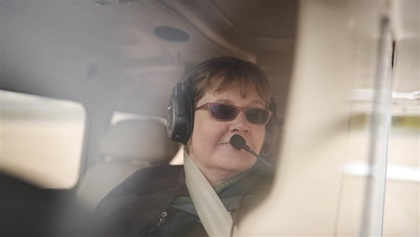Weather: Life exists in gray areas
Making challenging weather decisions

You’ve spent the past few days at your parents’ house and now your wife and kids are ready to get home. The Diamond DA40 you flew up to your weekend away is well equipped with a Garmin G1000 integrated glass panel with satellite weather in the cockpit, but no stormscope or radar. It’s summer, and you know that means afternoon thunderstorms. Your flight is about 200 miles, first across high rolling hills and national forests, and then lower farmland.
You check the weather and it’s perfect at the departure and destination, but you notice some moderate rain with convective potential just to the south of your departure and extending for about 30 miles. Then you get to the airplane and realize the satellite and ADS-B weather datalinks aren’t working. It’s midafternoon, and the sun will set in about three hours.
Oh, and in the bad old days before cheap in-cockpit weather, you had to stop and stay overnight along this exact route with similar conditions. Do you:
- Ignore history, get an updated radar picture just prior to takeoff, use ATC for assistance, and try and skirt around the weather?
- Wait for the cells to hopefully pass, knowing that if they don’t you have spent your entire day waiting, hoping to go, with no guarantee of improving weather?
- Rent a car and drive with a plan to pick up the airplane later?
- Call the parents and tell them not to strip those sheets just yet. You’ll try again tomorrow.
 Night is all right
Night is all right
I have rolled the dice with thunderstorms in the past and I’ve occasionally found myself in a situation where I was wishing I was on the ground, so without satellite weather I’m not taking any chances. I know I don’t want to put my family at risk, so that’s an added incentive to stay put. If I’m current and comfortable with night flying, I'd wait until the storm passes and then depart. Otherwise, however, I’d probably put off launching until the next day. —Jill W. Tallman, instrument-rated private pilot
 Tomorrow is another day
Tomorrow is another day
This scenario presents some of the realistic decisions we face as pilots. History tells me I should be wary of this route, and I know I’ve come to rely on in-flight weather for radar information. Yet my family is telling me it’s time to go, so I feel pressure to at least take off and take a better look. And obviously thunderstorms are not to be trifled with, but it’s not terribly difficult to skirt large areas visually and with ATC assistance. Regardless, I think I’ll wait this one out and try again tomorrow. Maybe in the meantime I can troubleshoot the satellite weather in case something pops up tomorrow. A long reroute is possible, but that would put us landing after dark, which I don’t want to do. —Ian J. Twombly, CFI



